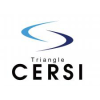Successful accountable care organizations (ACOs) consist of a superior confluence of quality efforts, physician engagement, patient engagement, the right administration and the ability to keep costs down. While the efforts may seem nearly no-brainers, the difficulty comes when doing everything and keeping costs down.
Many ACO leaders are looking for innovative ways to control costs and many are looking at, or should look at, life sciences companies. But the dance is in how to engage either entity. ACO leaders look to the life science companies to demonstrate that their products are proven and valid. Life sciences companies often don’t know where or with whom to engage. Is it the ACO lead (who handles the operations including day-to-day operations, contract negotiations and strategy)? Is it the medical director of the ACO (who handles all things “clinical” with the ACO and partners with the ACO lead in operations)? Is it the Quality Director (who typically works under the medical director, handling the boots-on-the-ground work required for an ACO to demonstrate high quality)? Who makes the decisions?
This complicated dance also includes a third partner—the payer. And here is the rub: Until ACOs are undertaking full risk—that is, they are responsible for the entire cost of care rendered to a population—it will be more challenging for life science companies to engage this type of organization. And I will emphasize here, undertaking full risk usually means an ACO is paid a per-member-per-month amount to administer care and pay claims for all services as agreed upon by the payer and the other ACO participants. Naturally, there are caveats for high-cost claimants, etc. As long as there continues to be a fee-for-service component of the transaction, the value proposition that some life science companies bring to the table becomes of lesser significance. But all is definitely not lost. As ACOs gain the skills and expertise needed to manage full risk, life science companies can begin forging relationships and gaining the trust of ACO leaders. Perhaps a pilot program demonstrating the clinical- and cost-effective use of a specific technology (e.g., to treat CHF or COPD patients) can be undertaken, or an innovative low-risk way of collaboration can be developed. Dependent on the type of collaboration, engagement should be with the appropriate ACO leader. For example, if the collaboration is clinical in nature, by all means, bring that to the medical director. Perhaps the collaboration would involve a participating payer to bring innovation to an ACO. Although these are typically more complex in nature, when full risk is involved, the collaboration largely resides within the other participating ACO entities. If the collaboration is a way to lower costs, enhance payer interactions, are contractual in nature, or enhance the network, then the appropriate person in most cases is the ACO administrative lead.
As life science companies desire to engage ACOs, it is also helpful to understand the structure of the ACO. Is it a joint venture? Is it hospital or physician led, or led by another type of entity? Who provides the funding for the infrastructure? This information may also provide insights into how many leaders you may need to engage in the long run. And when there is engagement with ACO leaders, a compelling picture must be presented in order for them to take notice. This picture should include valid clinical studies with a representative patient population and demonstrable quality improvements with preferably lower associated costs.
And of course, this will continue to evolve as ACOs mature over the next few years. Stay tuned… the accountable care environment is about to get way more interesting!







